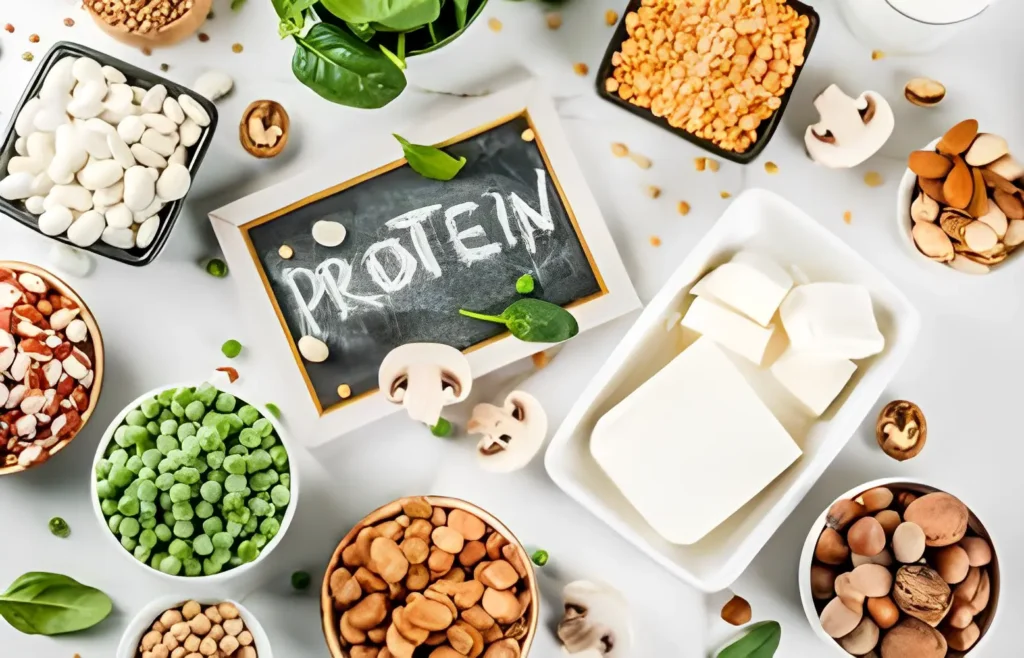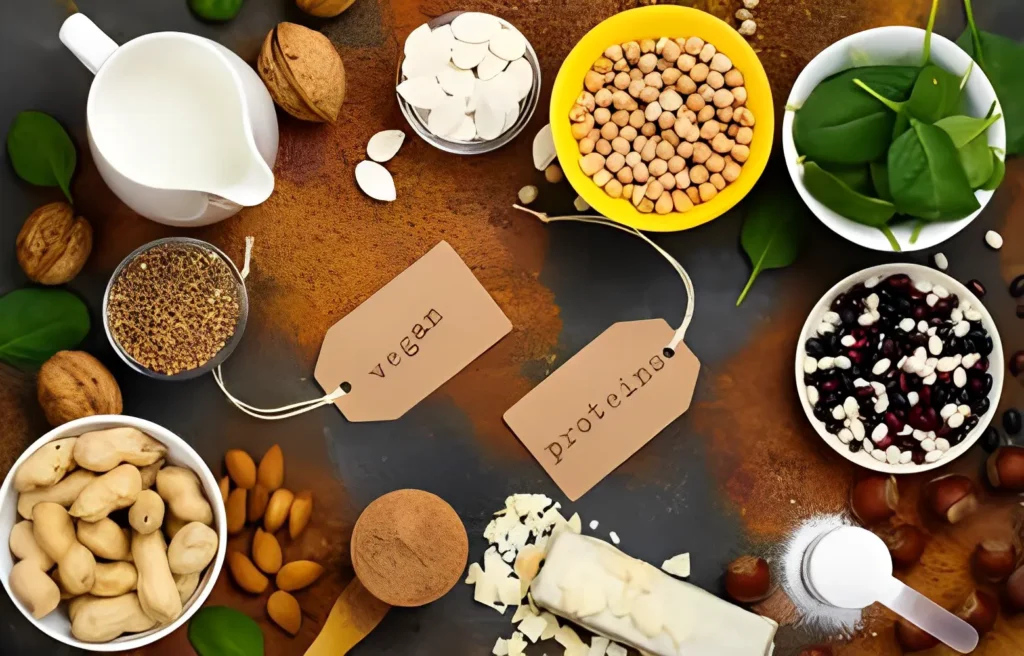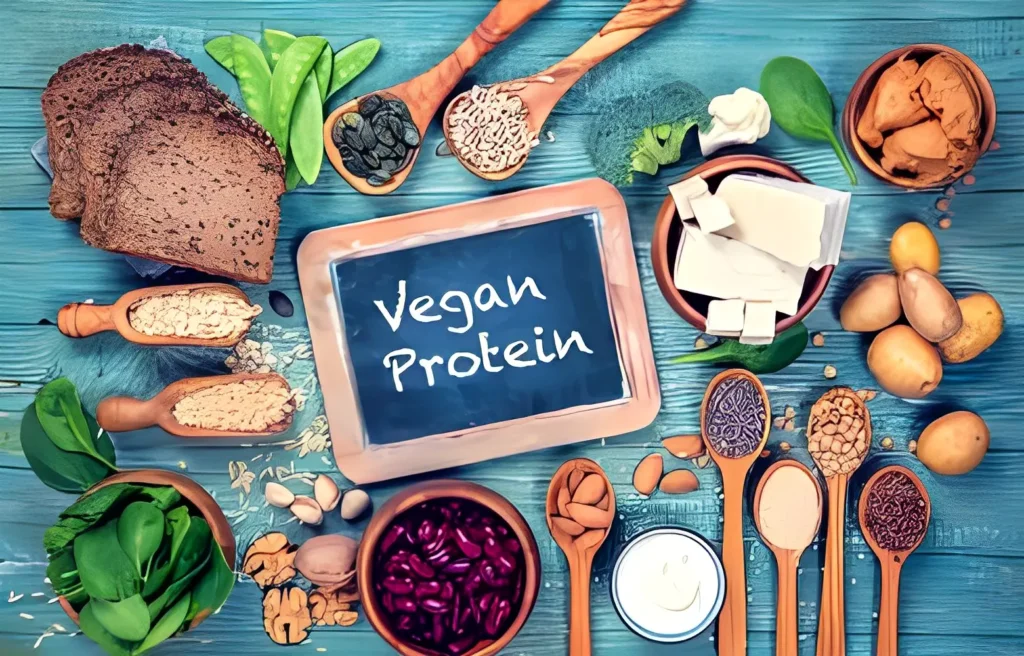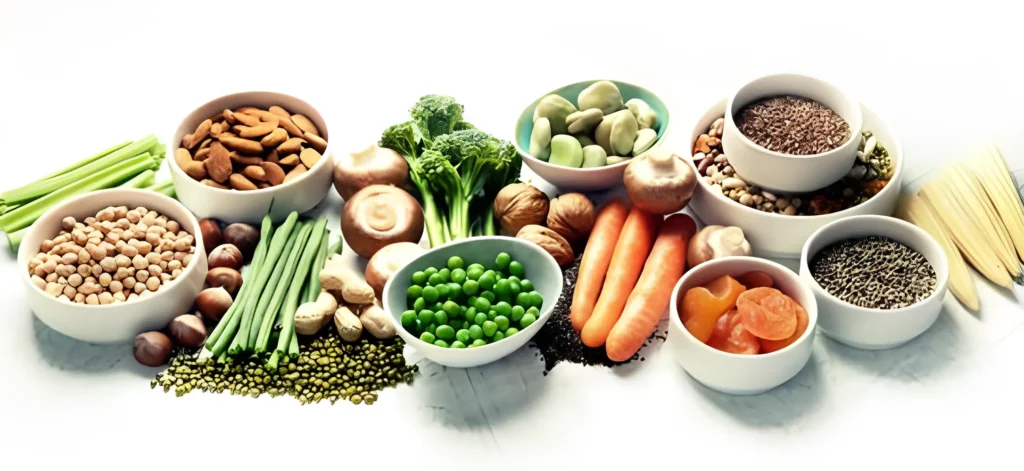Worries about protein on a vegan diet? Rejoice! Discover a world of Complete Protein Sources for Vegans fueling your plant-based lifestyle. Dive in and explore delicious options for a thriving, protein-packed journey!
But fear not, plant-based pals! The truth is, Complete Protein Sources for Vegans are abundant and delicious. From creamy tofu scrambles to nutty quinoa bowls, your body can absolutely thrive on a vegan diet packed with all the protein it needs. Ready to ditch the confusion and discover a world of vibrant, complete protein options? Let’s dive in!
P.S. Wondering what “complete protein” even means? It simply refers to foods containing all nine essential amino acids your body can’t make on its own. We’ll break it all down in the next section, so stay tuned!
Citation:
- The Academy of Nutrition and Dietetics: www.eatright.org
1. Excellent Complete Protein Sources for Vegans:

Craving complete protein sources for vegans? Ditch the outdated notion that plant-based diets leave you protein-deprived. The truth is, the vegan world is bursting with protein powerhouses waiting to be explored! So, buckle up, plant-powered friends, because we’re diving into the delicious and diverse realm of complete protein sources for vegans.
Soybeans: The Mighty Meatless Marvel
Let’s start with the OG of complete plant proteins: soybeans. Tofu, tempeh, and edamame, all hailing from this wonder bean, pack a powerful protein punch. Imagine whipping up a creamy tofu scramble bursting with 8 grams of protein per serving, or savoring a hearty tempeh burger loaded with 11 grams! But are these soy-based options safe? Fear not, friends! Studies by the American Heart Association find moderate soy consumption linked to heart health benefits, not harm. And if soy isn’t your jam, worry not, the complete protein party is just getting started!
Grains & Pseudocereals: Protein Gems From the Earth
Quinoa, amaranth, and buckwheat rise to the challenge, offering not just complete protein but a fiesta of fiber and essential nutrients. Quinoa, the fluffy grain loved by health enthusiasts, boasts 8 grams of protein per cup, cooked. Amaranth, an ancient grain packed with prebiotic power, delivers a similar protein punch. And buckwheat, not actually wheat at all, offers a complete protein package with a unique nutty flavor. Intrigued but unsure how to use them? Quinoa shines in bowls and salads, amaranth makes killer porridge, and buckwheat pancakes are a breakfast revelation!
Seeds & Nuts: Tiny Titans of Protein Power
Don’t underestimate the mighty bite of these pocket-sized protein powerhouses! Hemp seeds, with their 3 grams of protein per tablespoon, are a versatile addition to smoothies, salads, and even homemade granola bars. Chia seeds, the chia pudding stars, boast 4 grams of protein per tablespoon, along with a good dose of omega-3s. And nut butters? Creamy peanut butter, with 8 grams of protein per 2 tablespoons, is a classic, while almond butter offers a protein-rich twist. But wait, aren’t nuts high in calories? Yes, but they’re also packed with healthy fats, fiber, and other nutrients, making them a balanced protein choice in moderation.
Ready to explore the world of complete protein sources for vegans? This is just the beginning! Stay tuned for more plant-based protein powerhouses and creative ways to combine them for delicious and complete meals. Remember, a varied and balanced vegan diet is key, so experiment and have fun discovering your protein favorites!
2. Creative Combinations for Complete Protein:

Forget the bland tofu stereotypes – complete protein sources for vegans are bursting with flavor and versatility! But how do you weave them into delicious, satisfying meals? Buckle up, plant-powered friends, because we’re diving into a world of creative combinations that’ll tantalize your taste buds and nourish your body.
Ever wondered: is there a magic formula for complete protein goodness? Spoiler alert: there isn’t! But fear not, because the plant kingdom offers a treasure trove of options. Think soybeans and their mighty kin (tofu, tempeh, edamame), teaming up with quinoa’s fluffy goodness or buckwheat’s earthy charm. Don’t forget the nutty crunch of hemp seeds or the chia pudding that dreams are made of – these guys are protein powerhouses in disguise!
But wait, there’s more! Let’s get combinatorial (yes, that’s a real word)! Rice and beans, the classic duo, become a complete protein party when paired with a dollop of hummus. Or, whip up a quinoa buddha bowl brimming with roasted veggies, lentils, and a sprinkle of sunflower seeds. Feeling adventurous? Try a tempeh scramble with spinach and nutritional yeast for a breakfast packed with protein punch.
Remember: variety is key! Don’t get stuck in a rut with the same old combos. Explore different textures, flavors, and spices to keep your taste buds entertained. And hey, if you stumble upon a winning creation, share it with the world! After all, the vegan community thrives on inspiration and deliciousness.
Ready to unleash your inner plant-based chef? The internet is your oyster (or should we say, tofu scramble?). Countless resources and recipes await, waiting to transform your meals into complete protein masterpieces. So go forth, experiment, and discover the joy of plant-powered protein in all its creative glory!
3. Additional Tips and Resources:

Fueling your body with complete protein on a vegan diet doesn’t have to be complicated! But, let’s be honest, navigating the world of plant-based protein sources can sometimes feel like deciphering ancient hieroglyphics. Fear not, fellow plant-powered peeps! Here are some additional tips and resources to keep your protein game strong:
1. How Much Protein Do You Really Need? We all have different needs, so calculating your individual protein requirement is key. Wondering what the magic number is for you? It depends on various factors like age, activity level, and even goals. Check out this handy protein calculator to get your personalized protein roadmap.
2. Beyond the Numbers: Quality Counts! Not all protein is created equal. While some sources boast high protein content, their bioavailability (how well your body absorbs the amino acids) might be lower. Focus on quality sources like soy products, quinoa, and hemp seeds to ensure your body gets the most out of your plant-powered protein.
3. ️ Mix and Match for Plant-Protein Magic! Who says complete protein has to come from a single source? Get creative and combine complementary protein sources throughout the day. For example, pair rice and beans, peanut butter on whole-wheat bread, or a veggie burger on a quinoa bun. The possibilities are endless!
4. Resources at Your Fingertips: Feeling overwhelmed by information overload? Don’t sweat it! We’ve got you covered. Check out these credible resources for vegan-friendly recipes, meal plans, and expert insights on complete protein sources:
- The Physicians Committee for Responsible Medicine: https://www.pcrm.org
5. Remember, You’re Not Alone! The vegan community is vast and supportive. Don’t hesitate to connect with other plant-based individuals online or in your local area. Share your experiences, ask questions, and get inspired by the journeys of others!
Ready to embark on your complete protein adventure? With these tips and resources, you’re well on your way to a thriving and plant-powered life!
Conclusion:
Conquering the world of vegan complete protein sources doesn’t have to be a solo mission! This journey is all about exploration, experimentation, and, most importantly, enjoyment. So, fuel your curiosity, ask questions, and don’t be afraid to get creative in the kitchen. Remember, countless delicious and vibrant combinations await, just waiting to be discovered.

Feeling overwhelmed by information? No worries! Connect with the thriving vegan community online or in your local area. Share your experiences, seek guidance, and be inspired by the journeys of others. After all, a plant-powered plate is even more satisfying when shared with fellow veggie enthusiasts!
Ready to embark on your personalized protein adventure? With the right knowledge and resources, you’re well on your way to unlocking the full potential of a complete protein vegan diet. Remember, it’s not about perfection, but about progress. So, embrace the journey, celebrate your wins, and keep exploring the exciting world of plant-based protein power!P.S. Still have lingering questions about complete protein sources for vegans? Don’t hesitate to reach out in the comments below! We’re always here to support your plant-powered journey.
May be interesting: protein foods list for weight loss